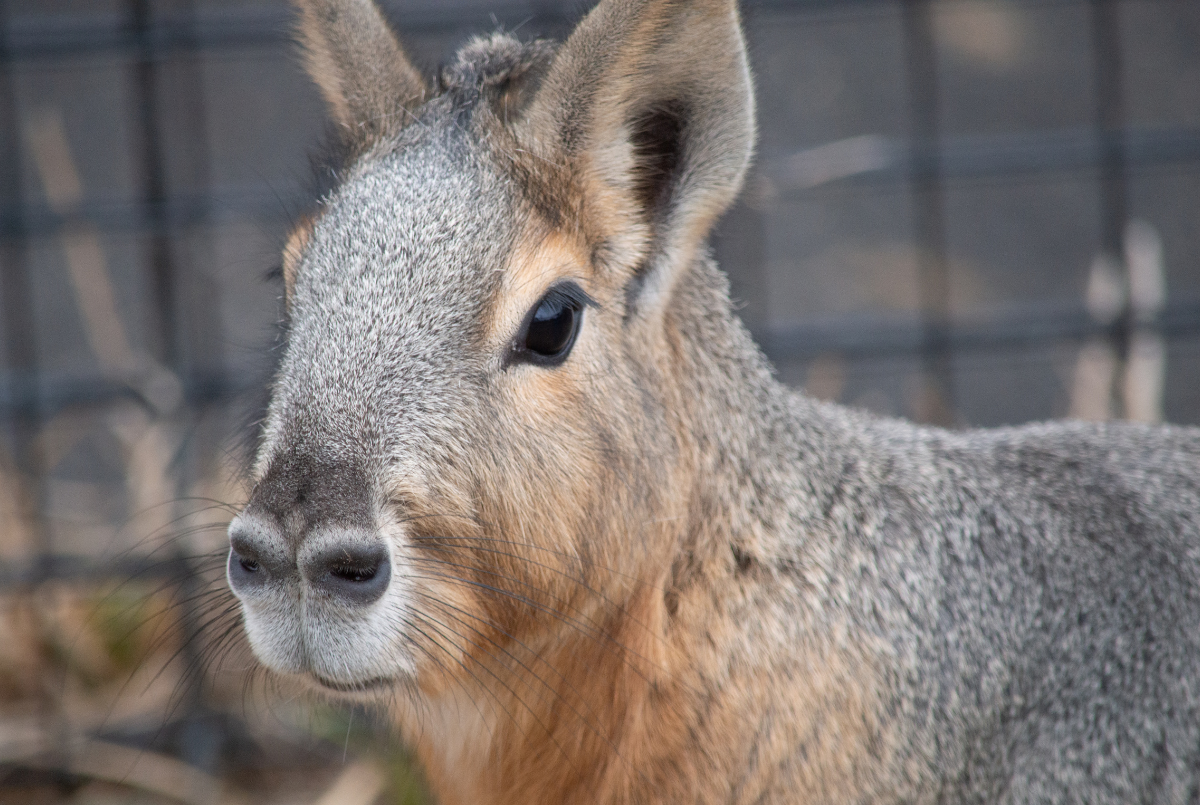Patagonian Cavy

Basic Information:
Scientific Name: Dolichotis patagonum
Habitat: Patagonian cavies are native to the sandy plains and shrublands of Argentina.
Diet: Patagonian cavies graze for grasses, cacti, and fruit.
Size: 2 to 2.5 feet tall / 2.3 to 2.5 feet long
Weight: 6 to 30 pounds
Lifespan: 14 years
Distribution Map:
I.U.C.N. Conservation Status:

What does this mean?
Near Threatened – a species that is determined by the International Union for Conservation of Nature (I.U.C.N.) to be declining in population and may meet the criteria for a threatened status in the near future.
Our Patagonian Cavies:
Plata (Female) – Born February 15, 2022
Pampa (Female) – Born February 15, 2022
About Patagonian Cavies:
Also called the Patagonian mara or Patagonian hare, Patagonian cavies are a small species of mammal found ONLY in southern and central Argentina. They typically reside in arid desert and scrubland habitats. They spend most of their time in monogamous family units, but do come together in larger groups when breeding as a way to protect their young. They communicate through a large variety of different noises. They are also capable of moving in a large number of ways from walking to hopping to trotting to prancing and more. Unfortunately, due to habitat loss along with increased competition for food with domestic sheep and the European hare, Patagonian cavies are now considered near threatened as their population has started to decline.
Did You Know?!
- Although they are often mistaken as being rabbits or deer, Patagonian cavies are in the same family as the guinea pig.
- Patagonian cavies are one of the larger rodent species found in the world. As such, they have ever-growing teeth that they constantly need to trim down through chewing.
- Patagonian cavies are capable of jumping 6 feet upward when scared.
- Since Patagonian cavies are so docile in nature, they have become popular pets and are known to be leashed and even “potty-trained.”
